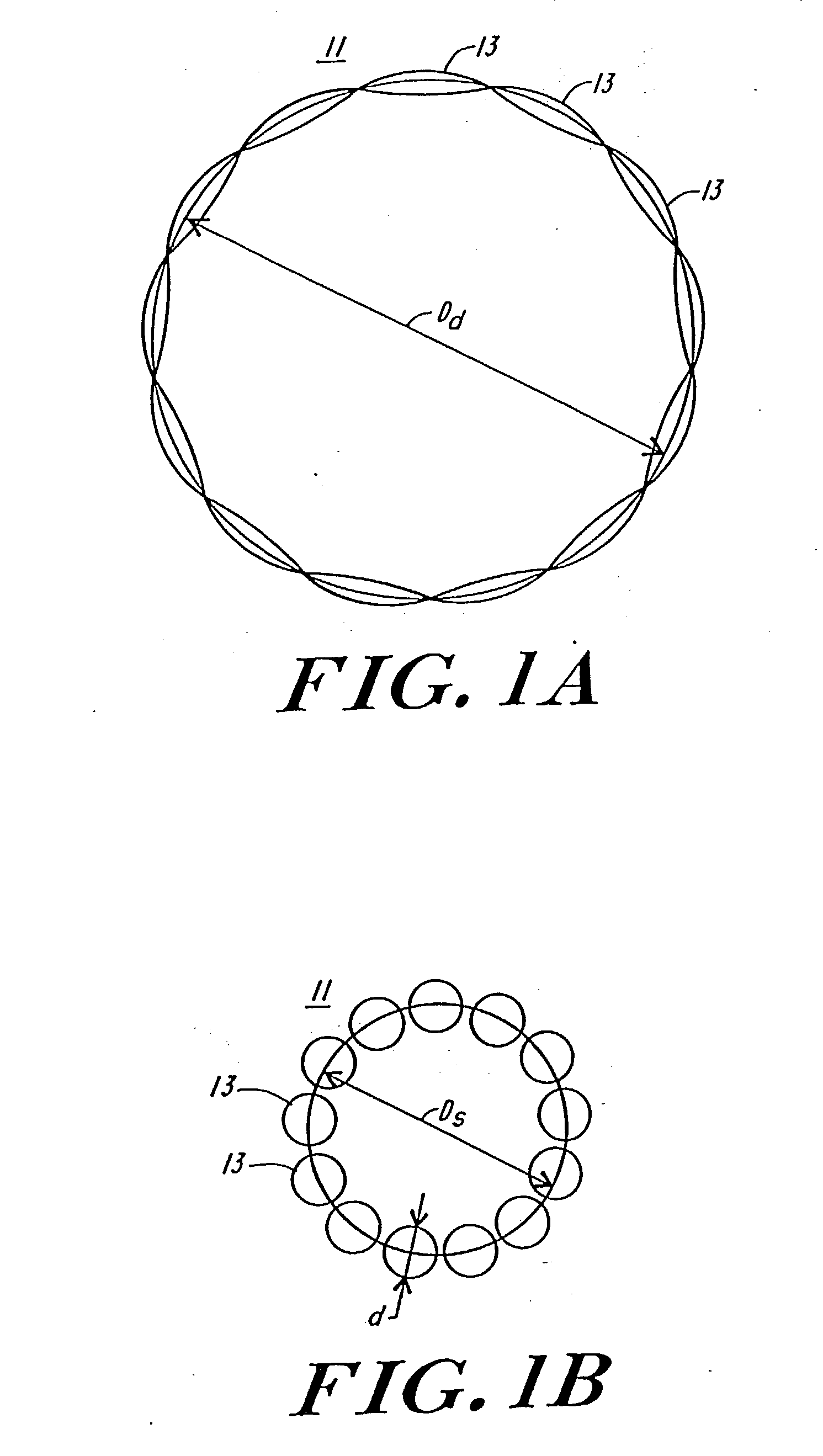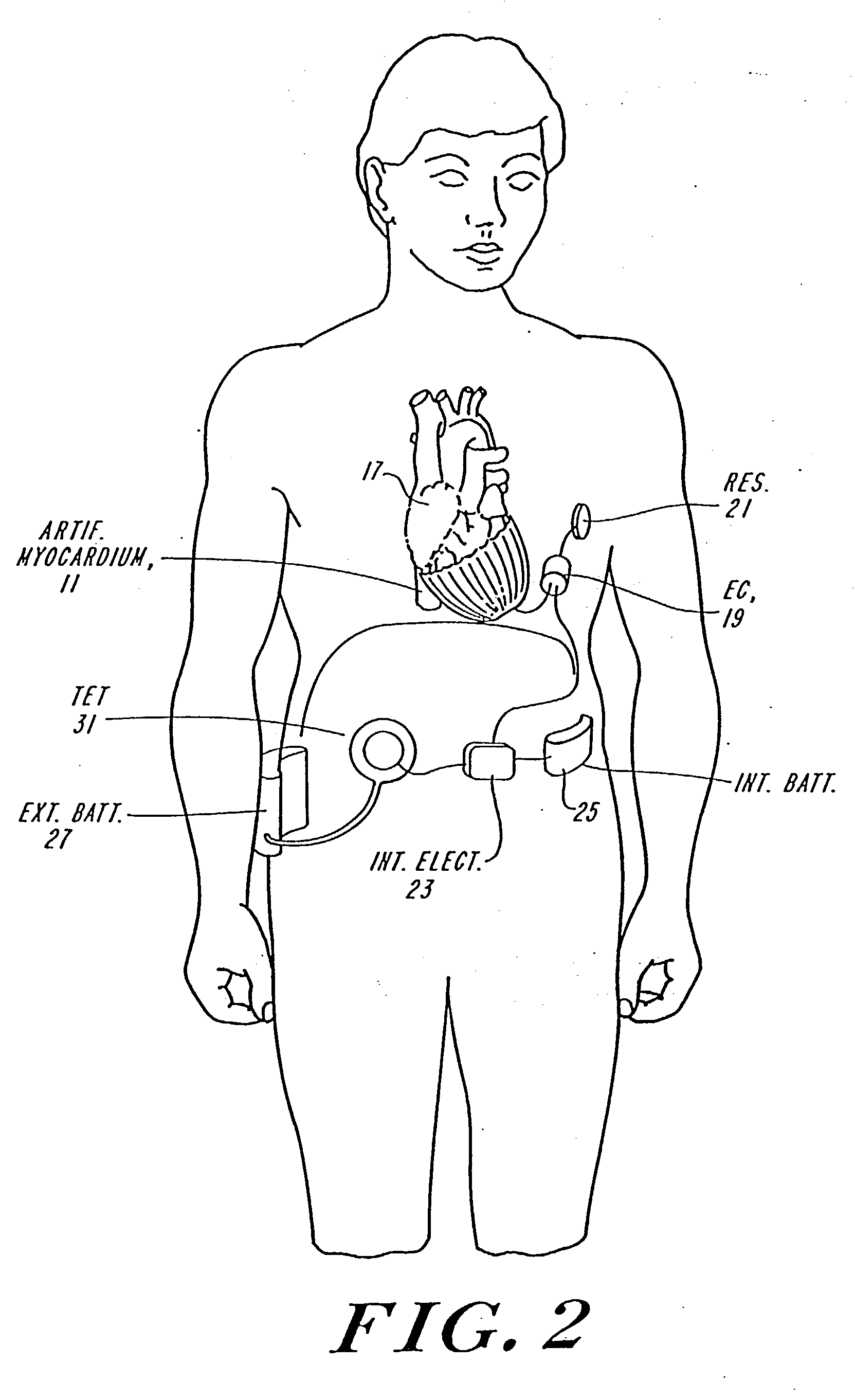Passive cardiac assistance device
a cardiac assistance and passive technology, applied in the field of passive cardiac assistance devices, can solve the problems of increasing the load, increasing the oxygen consumption of the heart, and inability to meet the needs of patients with ventricular dilatation, so as to limit the dilatation and improve the performance characteristics of the heart. the effect of low energy input and limiting the dilatation
- Summary
- Abstract
- Description
- Claims
- Application Information
AI Technical Summary
Benefits of technology
Problems solved by technology
Method used
Image
Examples
Embodiment Construction
[0065] FIG. 1A and FIG. 1B illustrate diagrammatically the operation of the artificial myocardium. The artificial myocardium 11 is formed of a series of tubes planed together in series to form, in this instance a complete circle, which in FIG. 1A has a diameter D.sub.d. In FIG. 1B the feature of the tubes is filled hydraulic fluid producing a circular cross-section, shortening the total perimeter of the circular cuff to a circle having a diameter D.sub.S. Referring to FIG. 1B, if the diameter of the tube with the circular cross-section is d, then the diameter of the circular cuff is approximately equal to nd / .pi., where n equals the total number of tubes. On the other hand, when the tubes are no longer filled with hydraulic fluid and are collapsed then the diameter D.sub.d is approximately equal to 2 n ( d / 2 )
[0066] These expressions follow from the consideration that the series of n tubes in the inflated condition, as illustrated in FIG. 1B form a circle with the number of tubes ...
PUM
 Login to View More
Login to View More Abstract
Description
Claims
Application Information
 Login to View More
Login to View More - R&D
- Intellectual Property
- Life Sciences
- Materials
- Tech Scout
- Unparalleled Data Quality
- Higher Quality Content
- 60% Fewer Hallucinations
Browse by: Latest US Patents, China's latest patents, Technical Efficacy Thesaurus, Application Domain, Technology Topic, Popular Technical Reports.
© 2025 PatSnap. All rights reserved.Legal|Privacy policy|Modern Slavery Act Transparency Statement|Sitemap|About US| Contact US: help@patsnap.com



